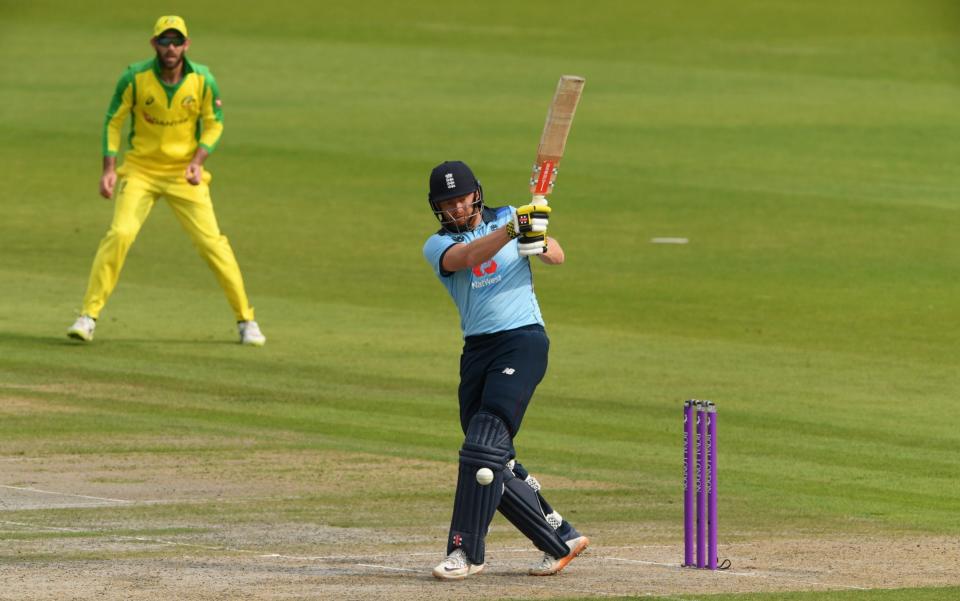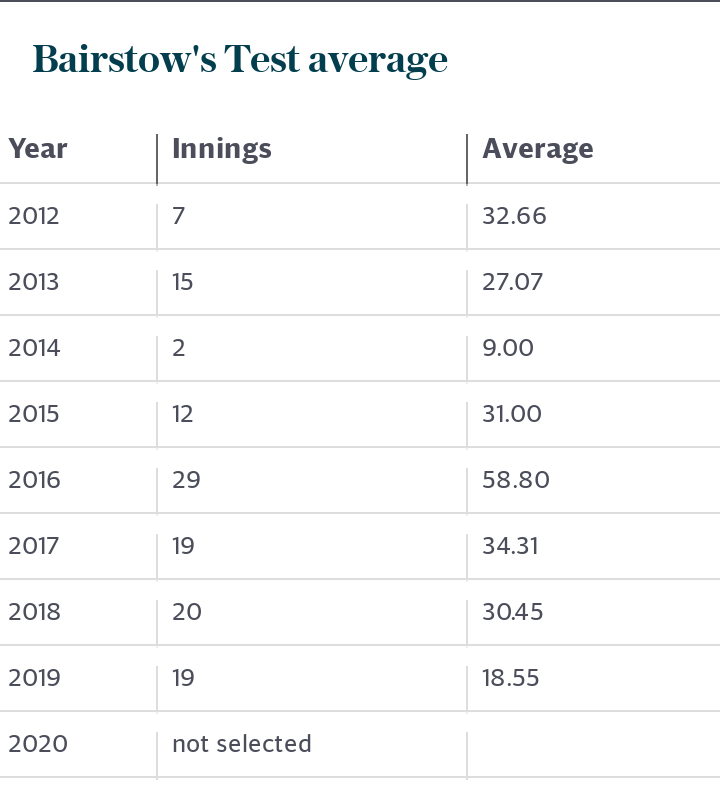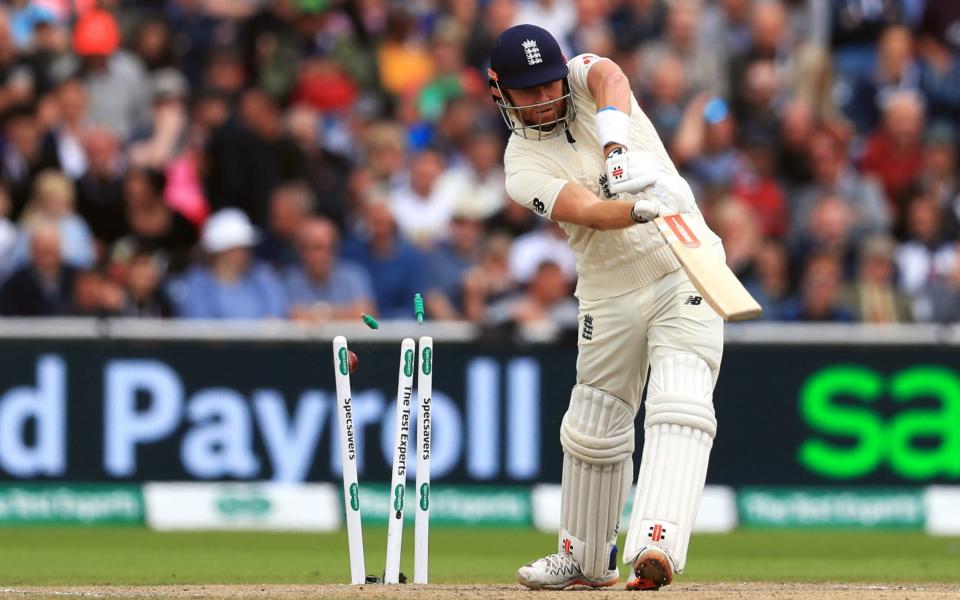Jonny Bairstow analysis: why becoming an ODI great is the very reason his Test form has slumped

Jonny Bairstow has spent recent days on a stage befitting his talents: opening the batting in the Indian Premier League, hitting two half-centuries in his first three games of the season. After ending the international summer with 112 against Australia, his status as one of the best white-ball batsmen in the world has never been clearer.
Yet never has Bairstow looked so far away from the Test team. Losing his red-ball central contract, as was confirmed Wednesday, had long been trailed: since the last central contracts were awarded, Bairstow had only played two Test innings as a stand-in, mustering one and nine. Having just turned 31, there is a real possibility that Bairstow will never play Test cricket again.
These two strands of the Bairstow story - his evolution into a white-ball phenomenon, and his long Test decline - are sometimes viewed separately, as if they are two tales involving two different players. But they are much better viewed together. For it is Bairstow’s very metamorphosis in white-ball cricket that is at the heart of his Test decline.
In 2016, after years on the fringes of the side, Bairstow was finally where he had always longed to be: at the heart of England’s Test side. That year he scored 1470 runs at 59 apiece, only 11 runs shy of Michael Vaughan’s record for the most runs scored by an Englishman in a calendar year, while being wicket-keeper to boot.

There was just one snag. While England were becoming the number one ODI side in the world, building towards the 2019 World Cup, Bairstow was an auxiliary member of their squad, filling in when others were unavailable but not a member of the first-choice side. He was naturally a middle-order player, but with Joe Root, Eoin Morgan, Ben Stokes and Jos Buttler, there was simply no route for Bairstow to get into the team. When Buttler missed some ODIs at the start of the 2017 summer, England handed Sam Billings the gloves instead; Bairstow was not even second-choice wicket-keeper.

And so Bairstow channelled his energy into becoming an opening batsman, recognising this as his only plausible route into the team. He was an accidental opener, and had only opened seven times for Yorkshire in one-day cricket before the collapse of Jason Roy’s form afforded him a chance during the 2017 Champions Trophy.
What came next has been extraordinary. Bairstow has developed into the consummate modern opener, finding a method to score with alacrity while minimising risk. In the history of ODI cricket, 70 players have scored 2,000 runs as opener. Of this rarefied group, Bairstow has the second best average - 50 - and the best strike rate of the lot, 108. He already probably belongs in an all-time England ODI side.
Yet the very qualities that made Bairstow so imperious in one-day cricket made him newly vulnerable in Tests. His new method, standing more leg side of the ball, opened up the off side against the white ball, but only opened up his stumps against the red ball. Since the Champions Trophy, Bairstow is averaging six against balls hitting his stumps from seamers, compared to 24 from 2015-17. Similarly, against balls that seam back in, he is averaging eight, compared to 19 in the previous period. No one in the world has been bowled more than Bairstow’s 19 times since 2017, one in three innings.

And so in recent years the trajectory of Bairstow the white ball and red ball player have gone in reverse. As Bairstow has become a more extraordinary white-ball player, he has become a less reliable Test one; he averages 18 since the start of 2019, 25 since the start of 2018, and 28 since the 2017 Champions Trophy. If there have been other complications - history counts against anyone being able to bat in the top five while keeping wicket, as Bairstow was asked to do in 2016-17 and in the 2018 summer - ultimately his biggest encumbrance has been a porous defence.

Naturally, Bairstow - one of the fittest and most dedicated cricketers around - will endeavour to regain his Test berth. Yet the question is not just how he fits into the side, with Buttler firmly established as keeper, but how Bairstow can make the case for a recall: so coveted in T20 leagues, his first-class appearances for Yorkshire will be limited.
Bairstow has been excellent for England in both Test and one-day cricket - just not at the same time. That attests to the broader challenges for even the most skilled cricketers to bridge the divergent demands of the formats. And if there is a little sadness in the decline of Bairstow the Test cricketer, the very changes that undermined his five-day game made him integral in the first-ever England team to win the World Cup. For Bairstow and English cricket alike, that is surely not such a bad trade-off.

